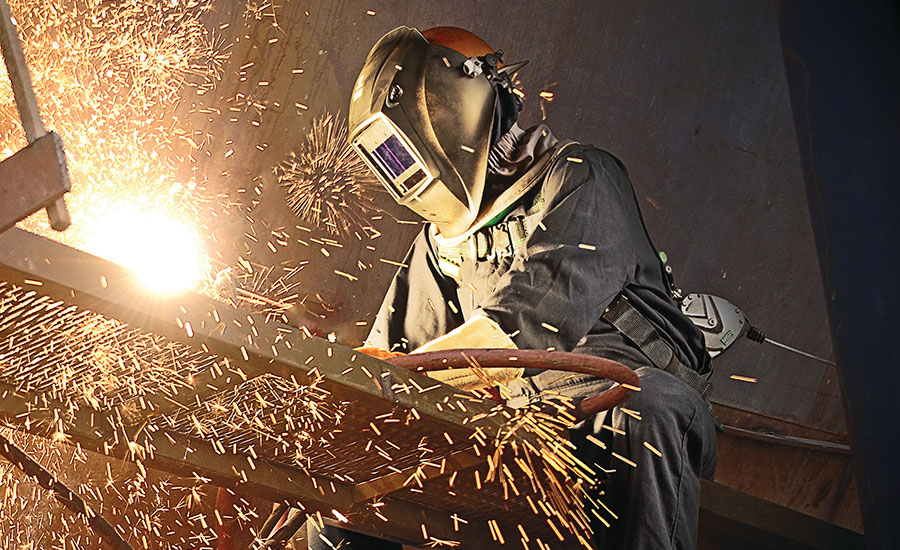The Ultimate Overview to Welding WPS Procedures: A Detailed Introduction for Welders
In the complex world of welding, Welding Procedure Requirements (WPS) offer as the backbone of ensuring quality, consistency, and safety and security in welding operations. Recognizing the subtleties of developing, carrying out, and monitoring WPS treatments is necessary for welders wanting to elevate their craft and meet sector standards. As we explore the numerous parts of a WPS and check out the details of certification and qualification, we will discover the crucial function these treatments play in the world of welding. Allow's start a journey to decipher the complexities and relevance of WPS procedures in welding practices.
Value of WPS Procedures
Understanding the relevance of Welding Treatment Specifications (WPS) procedures is crucial for guaranteeing the high quality and honesty of bonded structures. WPS treatments work as a roadmap for welders, detailing the necessary actions, criteria, and products called for to attain an audio weld. By adhering to WPS standards, welders can ensure consistency in their job, causing reputable and structurally audio welds.
Among the key reasons WPS procedures are essential is their function in preserving weld high quality and honesty. Adhering to the specified welding criteria and techniques described in the WPS aids stop defects such as porosity, fracturing, or insufficient fusion, which can jeopardize the strength and toughness of the weld. Furthermore, WPS procedures are important for guaranteeing conformity with industry standards and codes. By adhering to well established WPS guidelines, welders can demonstrate that their work satisfies the essential requirements for safety and security and quality, providing assurance to clients, inspectors, and regulatory bodies. Basically, the value of WPS procedures can not be overemphasized, as they are fundamental to achieving regular, top notch welds that meet industry criteria and requirements.

Parts of a WPS
A Welding Treatment Requirements (WPS) commonly comprises vital elements that detail the specific demands for executing a weld, guaranteeing uniformity and top quality in the welding process. The vital parts of a WPS include important variables such as base steels, filler metals, preheat and interpass temperatures, welding processes, securing gases, welding settings, and post-weld warm treatment demands.
Base steels refer to the products being joined, while filler metals are utilized to fill up the space in between the base metals throughout welding. The welding procedure describes the details technique to be used, whether it's gas metal arc welding (GMAW), shielded metal arc welding (SMAW), or one more approach. Welding positions specify the orientations in which welding can be done.

Qualification and Qualification
Having actually established the important parts of a Welding Treatment Specification (WPS), the emphasis now changes in the direction of the essential aspects of credentials and certification in welding practices.

Accreditation, on the various other hand, is the official recognition of a welder's qualifications by an appropriate qualification body or company. Welding qualifications are normally based on the certain welding procedures, materials, and placements a welder is certified to deal with. Holding a valid welding qualification demonstrates that a welder satisfies industry criteria and is proficient to perform welding tasks to the called for specs.
Producing a WPS
To create a Welding Procedure Specification (WPS) that satisfies market requirements, cautious factor to consider of welding procedures, products, and functional criteria is vital. The first step in developing a WPS is to visit site identify the welding process to be utilized, such as gas metal arc welding (GMAW) or protected metal arc welding (SMAW)

Executing and Checking WPS
Upon completing the extensive Welding Procedure Spec (WPS) that thoroughly details welding procedures, materials, operational parameters, and quality control actions, the emphasis moves to properly executing and keeping an eye on the established procedures. Implementation entails making certain that all welders associated with the task are acquainted with the WPS and follow it thoroughly during the welding process. This requires providing adequate training and supervision to ensure adherence to the specified treatments. Keeping an eye on the WPS entails continuous oversight to validate that welding tasks line up with the documented specifications. Assessments, testing, and quality assurance measures are vital elements of the monitoring process to determine any type of discrepancies or problems promptly. Normal audits and evaluations of the welding procedures help in keeping consistency and quality throughout the task. Reliable application and tracking of the WPS are crucial for ensuring the integrity, strength, and security of the welded joints, inevitably contributing to the overall success of the welding project.
Final Thought
Finally, understanding and following Welding Procedure Specs (WPS) is crucial for welders to make sure high quality, consistency, and safety and security in their job. By understanding the elements of a WPS, acquiring correct credentials and certifications, creating in-depth treatments, and executing and additional reading checking them properly, welders can enhance their skills and efficiency in welding practices. Sticking to WPS procedures is necessary for generating top notch welds and meeting market requirements.
In the complex globe of welding, Welding Treatment Specifications (WPS) serve as the backbone of web link making sure high quality, uniformity, and safety and security in welding procedures. The welding procedure details the details method to be made use of, whether it's gas steel arc welding (GMAW), secured steel arc welding (SMAW), or an additional approach.To develop a Welding Procedure Specification (WPS) that meets industry requirements, careful factor to consider of welding procedures, products, and operational specifications is vital. The very first step in creating a WPS is to recognize the welding process to be used, such as gas metal arc welding (GMAW) or secured steel arc welding (SMAW)Upon wrapping up the extensive Welding Procedure Requirements (WPS) that carefully information welding processes, products, operational parameters, and high quality assurance actions, the focus moves to effectively executing and checking the recognized procedures.